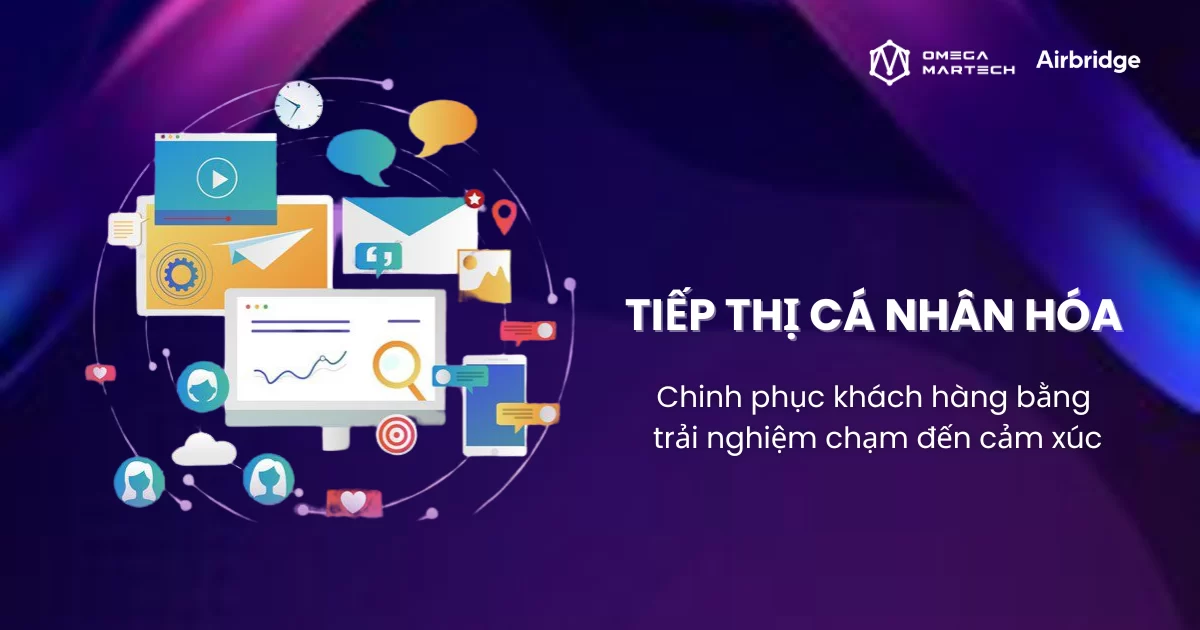When registering to use a brand's service through the brand's website or app. You will receive a number of questions related to your personal interests and desires during the registration process. Brands asking this question is the process by which brands collect data to personalize the experience when you interact with their products/services. Personalizing information based on customer habits and preferences is one of the familiar activities that we do all the time and this is gradually becoming a matter of course.
Let's explore why personalized marketing is still so important after all these years. And how you can make better use of the information you collect from users.
Why personalized marketing is still important
Personalized marketing allows businesses to identify each customer's preferences and desires, thereby delivering messages tailored to each audience.
For marketers, Personalization is a key strategy in the process of reaching and conquering the hearts of customers because of the special benefits it brings. Thanks to personalized marketing, customers can receive offers and information tailored to their interests, from which customer trust and loyalty to the brand will also increase. At the same time, this also helps businesses send the right message to the right people at the right time, cutting advertising costs. Once customers are satisfied, they are highly likely to return again and again, and the brand can build a strong competitive advantage over competitors in the market.
Accept diverse personalities and interests
Recently, the trend of being neutral or following the majority is no longer the trend. This reflects a shift in the marketing field, from following the tastes of the masses to accepting and promoting the diverse personalities and interests of each person.
It is not simply about grouping customers based on common characteristics such as gender, age or geographical location, but more importantly, it is necessary to find the unique needs of each individual in that group. . While distinguishing between these common characteristics remains important, in the current context, it is most urgent for businesses to refine their approaches to suit each individual's individual preferences. client.
Changes to adapt to the enhanced Privacy landscape
In recent years, the digital marketing industry has paid special attention to improving user privacy. For example, a big event that happened this year was Google's decision to stop supporting third-party cookies. Third-party cookies, which are pieces of code that store user data from various online sources, have caused many concerns among users about information being exposed or stolen during activities. bad, breaking the law. Your privacy is guaranteed when using applications, and businesses need to transform their operating methods to build customer trust. This is why traditional marketing methods that depend on third-party cookie data sources will no longer be effective and become outdated.
Meanwhile, "first-party data" is increasingly being focused on and used more and more. Collecting first-party data allows companies to gain deeper insight into user behavior through direct interactions and survey tools. Most importantly, all of these activities respect customer privacy. You can use this data to personalize everything from marketing campaigns like emails and push notifications to customer care activities while using your products and services. Personalizing experiences will help increase customer loyalty and conversion rates for your services.
From personalization to hyper-personalization
It's time for us to move beyond ordinary personalization to hyper-personalization. This strategy uses artificial intelligence (AI) and big data to build content recommendations for each different customer audience. Unlike basic personalization, which is simply suggesting attractive products, hyper-personalization goes deeper into analyzing user activity and purchase history. From there, it will predict the time of purchase and send messages at the right time to meet customers' wishes.
Hyper-personalized marketing is increasingly popular because it identifies and anticipates each individual's unique needs, even before they are aware of them. This approach leads to more conversions by leveraging detailed analytics on customer behavior. The benefits of hyper-personalization will certainly create unique and attractive Marketing campaigns.
Personalized Marketing: useful applications to improve personalized customer experiences
Create target audiences for advertising campaigns
How can you fine-tune your personalized marketing efforts? Once you've successfully attracted new users with initial campaigns, it's even more important to keep them active and engaged with your app. One of the effective ways to maximize retention and increase customer lifetime value (LTV) is to implement targeted, personalized advertising campaigns tailored to your audience. that you are aiming for.
Airbridge will be a powerful assistant to help you simplify the process of creating and identifying target audiences through comprehensive data collected through the SDK. Here, you can flexibly adjust your target audience through selecting specific actions, such as installing the app, opening the app, and registering for membership.
Furthermore, you can also customize your target audience segmentation by combining many other criteria together to suit your unique purposes and needs. These target audience characteristics are then automatically saved, allowing you to reuse and modify them easily in the future.
How to set up target conditions in Airbridge Audience Manager
Airbridge makes it easy to create audience segments based on user behavior, such as groups of customers who have installed and subscribed to an app. You can combine data extracted from Airbridge with your own data (first-party data) for in-depth analysis and the most comprehensive overview.
Additionally, Audience Manager allows you to automatically create audience segments that sync with your advertising channels and deliver specific solutions. This helps you reach users effectively through retargeting, detargeting, and lookalike strategies.
Airbridge Audience Manager uses Luft, a database developed by Airbridge itself, allowing you to work 20 times faster than other solutions.
Create a personalized welcome experience for users using a variety of measures
Integrate different solutions to deliver a personalized welcome experience to new users. For example, you can set goals based on user interactions across campaigns or advertising assets, by integrating app installs and deep link attribution results on Airbridge that convert to customer interaction platforms like Braze. This targeting is based on attribution data, allowing for personalized messages.
Queenit illustrates this by integrating Airbridge with Braze for effective user grouping. For example, marketers can offer a 10% discount to new users identified by Braze after engaging with a specific advertising campaign. Additionally, this data enables the creation of targeted campaigns that drive repeat visits, distribute coupons, and send push notifications to users with products in their carts awaiting checkout. Leveraging these solutions together enables continuous fine-tuning of personalized CRM information flows to improve campaign effectiveness.
How to integrate Airbridge and Braze for personalized marketing
Learn how to integrate Airbridge and Braze to launch effective personalized marketing campaigns
Marketing strategies are constantly changing according to modern trends. If you're looking for solutions to keep up with trends and optimize your marketing campaigns, contact Airbridge's team of omnichannel marketing experts for advice.





